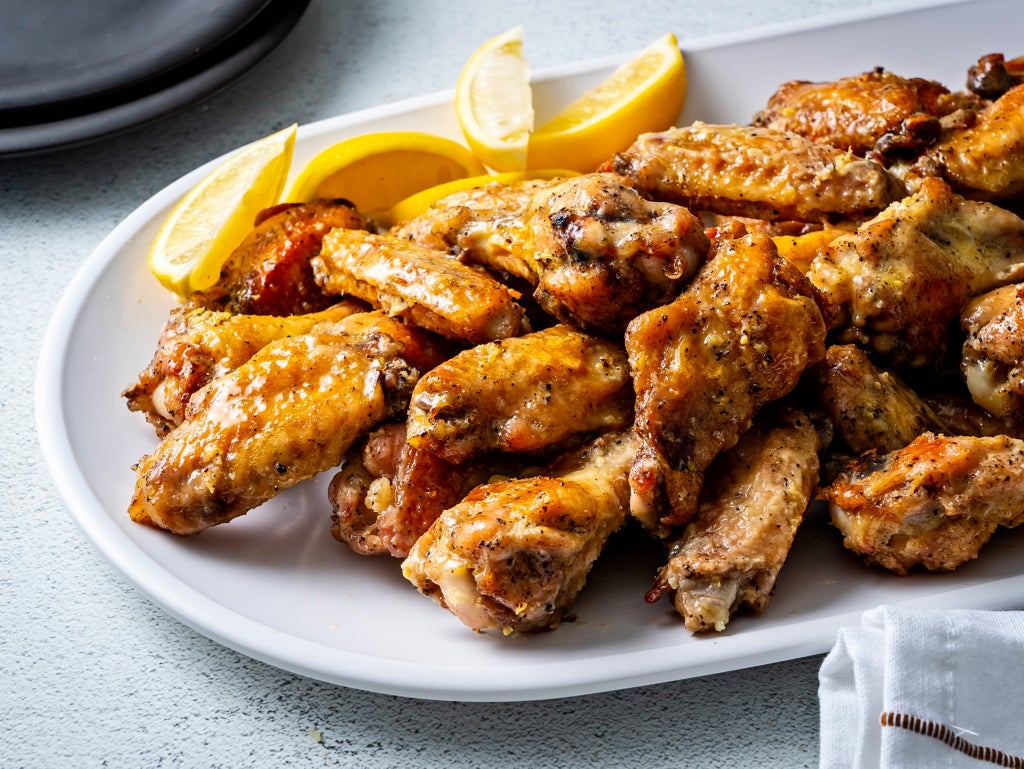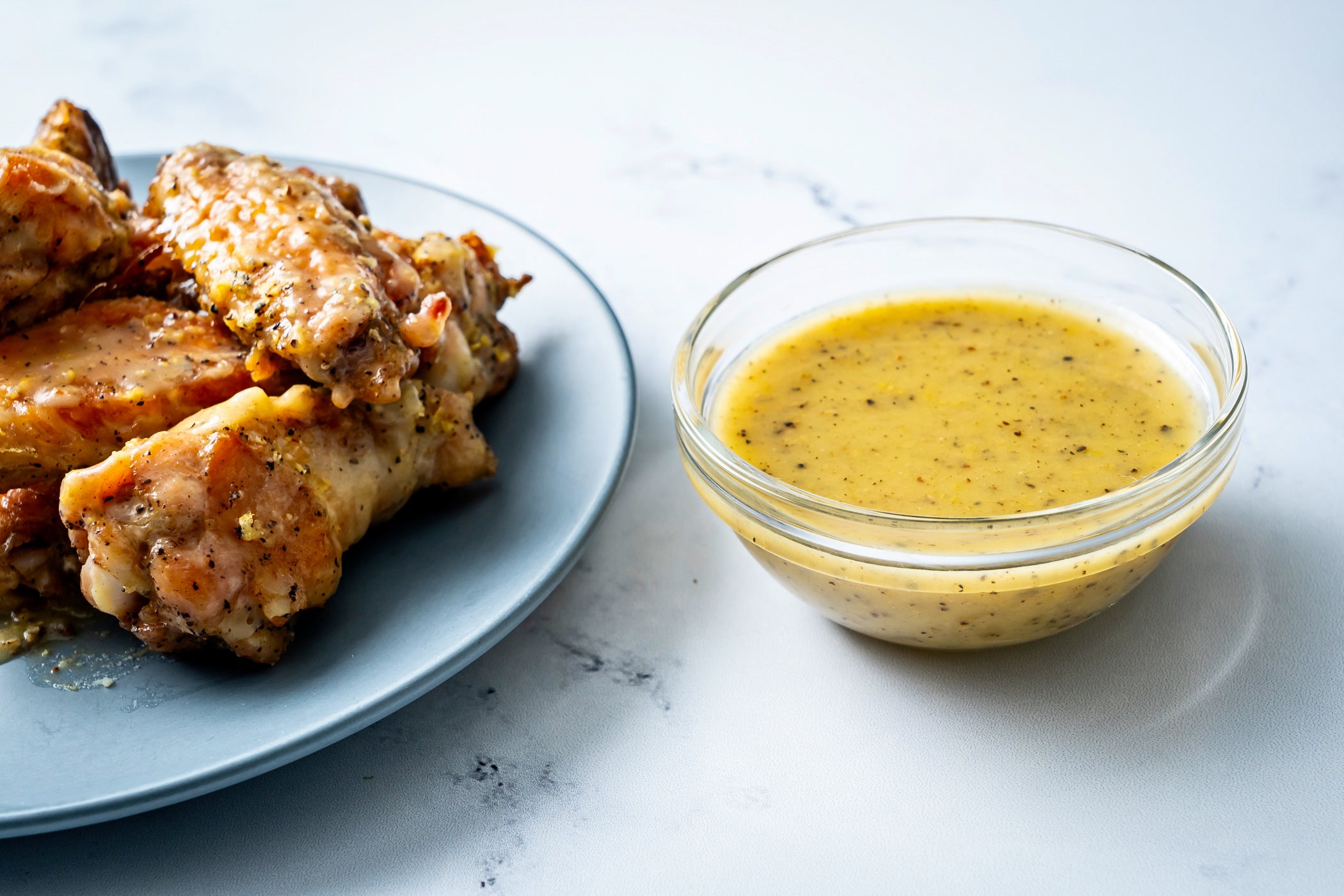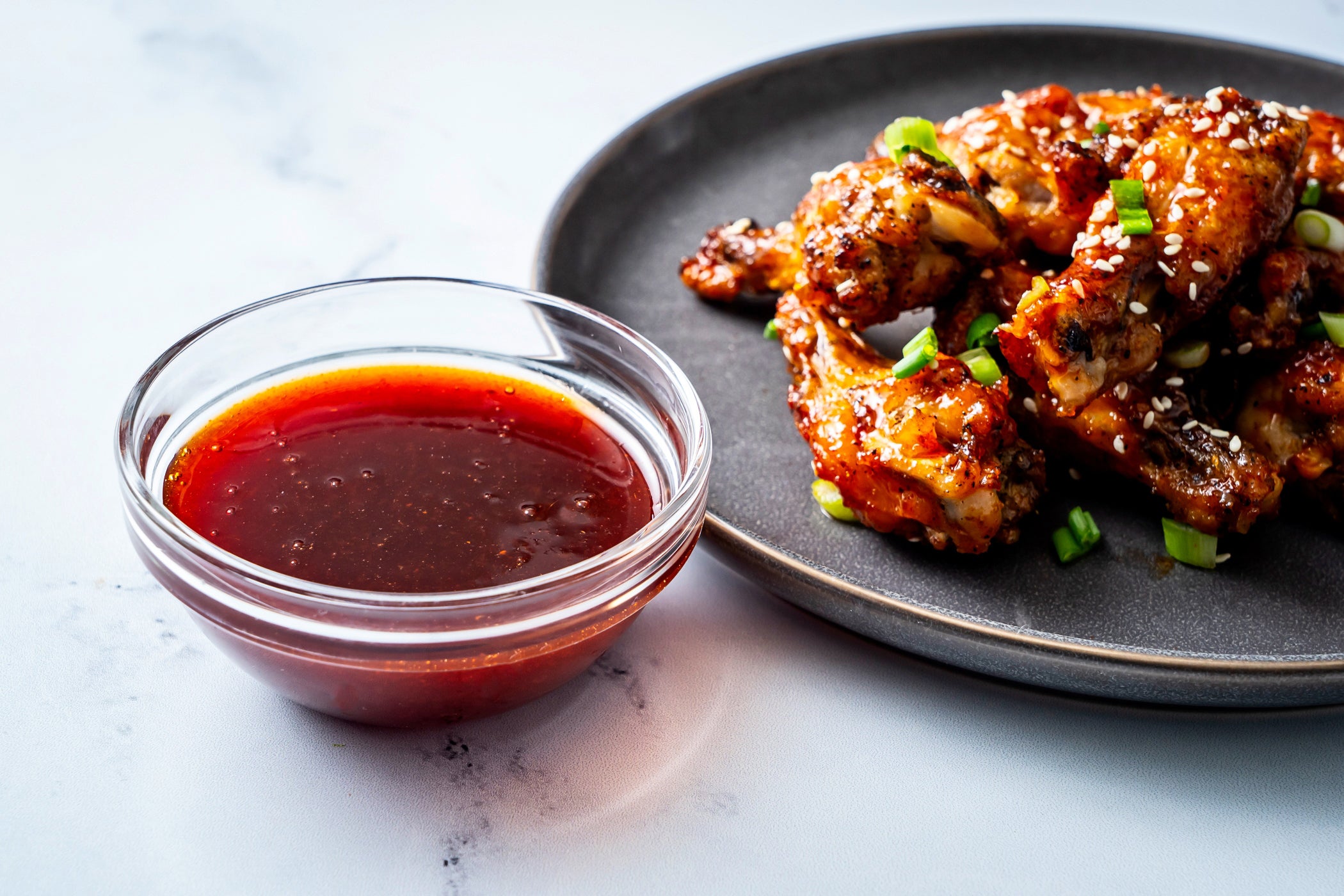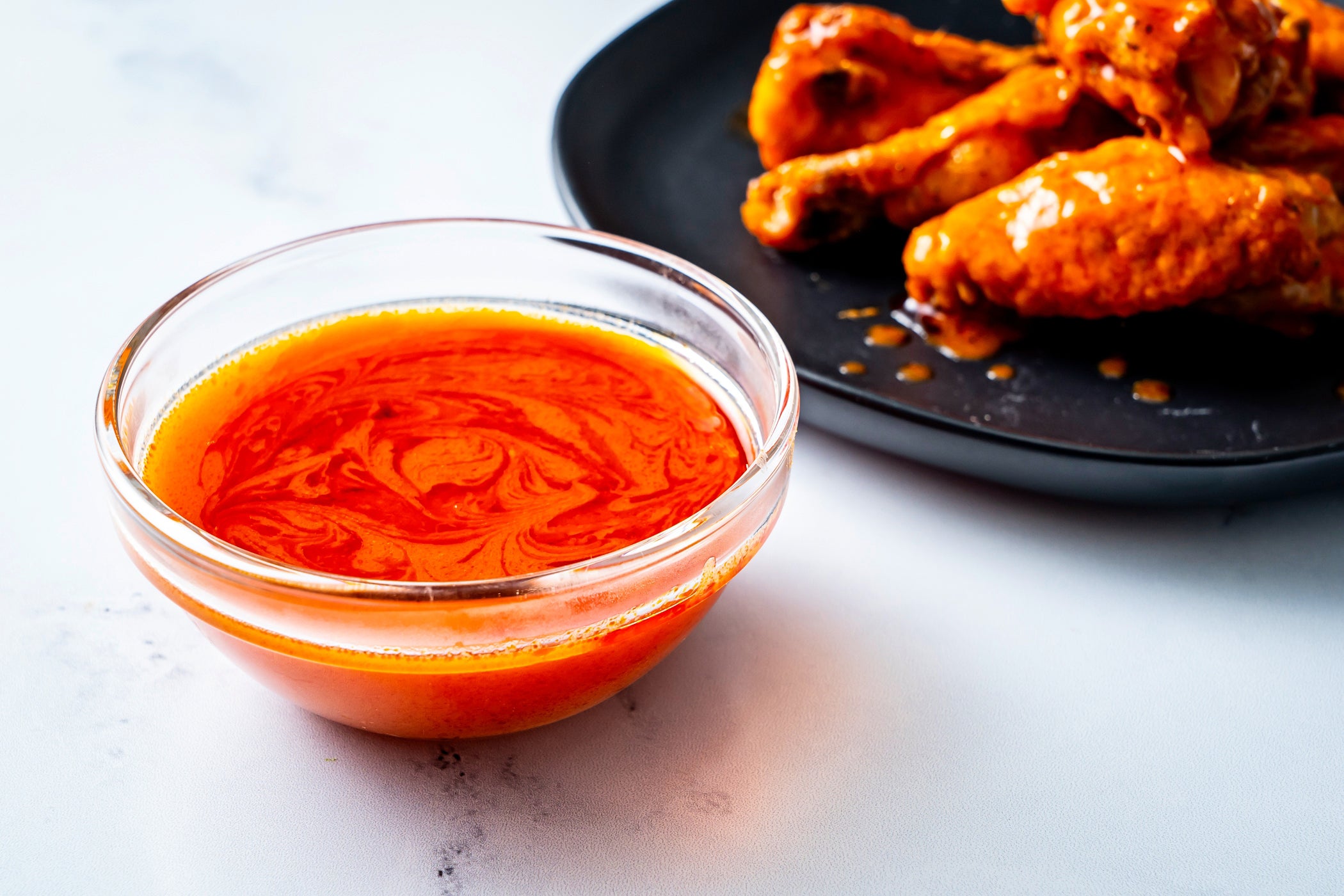
Served whole or cut into sections; deep-fried (battered or naked), air-fried, baked or grilled; flavoured with any of myriad sauces and/or spice blends – chicken wings have range.
Ask any connoisseur of this poultry part about their ideal wing, and you’ll get an assortment of answers as to the “right” way to prepare them. Whether you count yourself in that group and want tips to enhance your tried-and-true method or you are looking to join the wing club for the first time, here are three indoor cooking methods and an equal number of sauces that you can mix and match as a starting point on the road to wing heaven.
Choose your wing or alternative
The wing process begins with purchasing. If possible, buy air-chilled chicken because there is less moisture, which means crispier skin. You should still pat them with paper towels to get them as dry as possible before seasoning and cooking, but air-chilled poultry means you’ll create less waste.
Unfortunately, the beloved ingredient might be out of reach for some. The chicken wing shortage we faced last year continues to create shortages. In that case, there are still options to enjoy your favourite wing sauces without having to drink them straight.
- Whole wings vs sections. The wing recipes here call for them cut into sections – flats and drumettes – which you can buy prefabricated or cut yourself (it’s up to you if you want to leave the tip attached to the flat or save it for another use, such as stock). Alternatively, you can leave the wings whole; they might be easier to find that way and don’t require extra prep.
- Other parts of the chicken. Drumsticks and thighs are an option for those who can’t procure wings. Even chicken chain Wingstop – where “wing” is literally part of the name – embraced thighs following the price increase of its namesake product. The one thing to note with dark meat is that it will likely take longer, depending on the method, to cook them.
- Vegetarian and vegan alternatives. For all of the non-meat-eaters of the world, you can experiment with cauliflower florets, tofu or plant-based nuggets instead.
Choose your cooking style
This decision depends on the amount of time and effort you want to dedicate to the process and the desired level of crispiness. Each of the following methods has its pros and cons.
- Bake. Low in effort but requiring an investment in time, baking can give you crispy wings with the help of a little science and baking powder. The technique was popularised by J Kenji López-Alt in an article for Serious Eats. He later recommended adding cornstarch into the mix for even more crispiness, which you are certainly welcome to do, but I was pleasantly surprised by the results I achieved without it. However, if crispiness is truly what you’re after, let them rest in the refrigerator overnight before baking, for maximum crunch.
- Deep-fry. Though it’s perhaps considered blasphemous when it comes to wings, if you’re going to deep-fry chicken, it should be breaded. A coating of potato starch (or cornstarch if that’s all you have) and two trips to the fryer are the keys to creating the crispiest wings I’ve ever made – and I’ve fried a lot of chicken in my lifetime. Make sure to let them rest for at least 5 minutes between frying sessions to get rid of as much moisture as possible and end up with crunchy, craggy skin that will hold up much better when sauced than chicken that has been fried only once. The main downside to this method is the effort required to fry all of the wings and then deal with the leftover oil.
- Air-fry. I don’t own an air fryer, but people really love them for ease and convenience. And if I were to ever find myself in possession of one, chicken wings are at the top of the list of dishes I’d make. Similar to the techniques above, this method, adapted from Tanya Harris’s My Forking Life blog, calls for a pure starch (cornstarch in this instance) to help create a crisp exterior (though not the crispiest of the three options). However, it’s quicker than baking and neater than deep-frying – a win-win.
Choose your sauce
This is where things get interesting. Sure, you could buy a bottle of your favorite barbecue (or other) sauce and call it a day, but the possibilities are practically limitless when it comes to flavour combinations. Here are three sauce options, or you could let your imagination run wild! (And if saucy wings aren’t your thing, another option is to toss the chicken with a spice blend once cooked – sazón chicken wings, anyone?)
- Buffalo sauce. This is a classic for a reason. Sure, you could grab a premixed bottle of sauce from the store, but it’s just as simple to make at home by mixing Cajun pepper sauce and butter (which is often a component of wing sauces). Making Buffalo sauce from scratch comes with the bonus that you can adjust it to your liking by adding some honey or molasses to balance the heat, or by seasoning it with your favourite spices.
- Gochujang-honey sauce. This Korean-style sauce stars gochujang, a fermented pepper paste that’s fairly mild, savoury and has a hint of sweetness (it’s a favourite condiment of mine.) Honey and brown sugar help bring the sauce squarely into the sweet category, while soy sauce, garlic and ginger provide added complexity and dimension. Wings tossed in this sauce will leave you with sticky fingers that you’ll be more than happy to lick clean.
- Lemon-pepper sauce. Consisting of just three ingredients (not including salt), this lemon-pepper butter sauce would go great on anything. Black pepper is the standard, but a blend of peppercorns (black, white, pink and/or green) adds intrigue. Regardless of what kind of pepper you choose, grind it yourself for maximum flavour, and feel free to increase the amount called for in the recipe for extra kick.
However you choose to cook and flavour your chicken wings, just make sure to serve them hot and fresh for maximum enjoyment. A container of ranch or blue cheese dressing on the side for dipping is always welcome, and throw in a few celery sticks or carrots to make it a meal.
Lemon pepper chicken wings

Active time: 15 minutes | Total time: 2 hours
Serves: (makes about 20 pieces)
Bright with acidity and full of black pepper’s spiciness, lemon pepper chicken wings deserve a spot in the pantheon of great wing flavours. But true appreciation for this dish has, for the most part, has been limited to certain regions and populations.
Lemon pepper wings have long been closely associated with Atlanta’s hip-hop and strip club culture. Chicago’s fried chicken and fish joints, typically found in the city’s predominantly black neighbourhoods, share an affinity for the spice mix, which adds plenty of tang when sprinkled on fillets of fish and wings “fried hard” (AKA left in the fryer to get extra crunchy). But in recent years, the wings are gaining broader acclaim. They have been name dropped in countless songs, particularly by rapper Rick Ross (who also owns multiple Wingstop locations); “lemon pepper wet” wings were featured in the first season of Donald Glover’s Atlanta TV series; and NBA player Lou Williams made headlines in 2020 when he was required to quarantine for 10 days after visiting his “favourite restaurant”, Magic City, a strip club known for the dish.
Lemon pepper wings are hitting the mainstream, and it’s about time.
Most iterations start with a seasoning blend consisting of the two namesake ingredients. Citric acid is a common component in commercial blends, adding a mouth-puckering tartness that’s hard to achieve with just fresh lemon zest, and the blend can also contain sugar, onion and garlic powder. Simply sprinkle the spice rub on wings and you’ve got the “dry” version. For “wet” wings, you can combine the signature seasoning with Buffalo sauce or make a buttery lemon-pepper sauce to coat the wings, as in the recipe below.
The wings are also tossed with salt, garlic powder (my favourite) and pepper before roasting. Black peppercorns are traditional in this dish, but you can use a mix of different types of peppercorns for more complexity. I purchased a peppercorn medley that contained black, white, pink and green peppercorns (along with some allspice) that I used in my testing. In food writer and private chef Angela Davis’ lemon pepper seasoning blend, she combines black and white peppercorns with a bit of coriander, which “has a citrusy flavour that reinforces the lemon”. Regardless of what pepper (and other spices) you decide to include, grind them fresh for the most flavour.
For the lemon-pepper sauce, swirl lemon zest and freshly cracked pepper in hot butter to infuse it with citrus and spice. The heat helps to bring out the fragrance of the spice for even more flavour. Fresh lemon juice is added at the end for the dish’s signature acidity. Aside from salt, I kept the sauce to just these three ingredients, but additional spices, citric acid for even more tartness, or a bit of sweetness in the form of sugar or honey are all fair game.
Make ahead: The wings can be tossed with the baking powder and seasonings and refrigerated uncovered up to 1 day in advance.
Storage: Refrigerate leftovers for up to 3 days.
Ingredients:
For the wings:
90g chicken wings (drumettes and flats)
2 tsp baking powder
1 tsp fine salt
1 tsp freshly ground black pepper or mixed peppercorns
½ tsp garlic powder
Lemon wedges, for serving
For the lemon pepper sauce:
4 tbsp unsalted butter
2 tsp finely grated lemon zest plus 2 tbsp fresh lemon juice (from 1 lemon), divided
1 tsp freshly ground black pepper or mixed peppercorns
¼ tsp fine salt
Method:
Make the wings: line a large, rimmed baking tray with parchment paper or aluminum foil and place a wire rack inside. Add the wings to a large bowl and pat dry with paper towels. Sprinkle with the baking powder, salt, pepper and garlic powder and toss until the wings are evenly coated. Let sit for 1 hour at room temperature or refrigerate uncovered – ideally on the bottom shelf, for food safety purposes – up to overnight. (A longer refrigeration leads to crispier wings. If refrigerating the wings, bring to room temperature before cooking.)
Position a rack in the middle of the oven and preheat to 230C. Roast the wings for 20 minutes. Flip the wings and continue to roast for 20 to 30 minutes more, until crisp and golden brown. Remove from the oven and let sit while you make the lemon-pepper sauce.
Make the lemon-pepper sauce: in a small saucepan over medium heat, melt the butter until it starts to bubble. Remove from the heat, add the lemon zest, pepper and salt, and swirl it around in the hot butter for 30 seconds to infuse it with citrus and spice. Stir in the lemon juice.
Using tongs, transfer the wings to a large bowl, add the lemon pepper sauce and toss until evenly coated. Transfer the wings to a platter, making sure to pour any sauce remaining in the bowl over the top, and serve with lemon wedges for anyone who wants extra pucker.
Nutrition information per serving (5 pieces chicken and 1 tbsp sauce) | calories: 379; total fat: 31g; saturated fat: 13g; cholesterol: 124mg; sodium: 1,009mg; carbohydrates: 2g; dietary fibre: 1g; sugar: 0g; protein: 23g.
This analysis is an estimate based on available ingredients and this preparation. It should not substitute for a dietitian’s or nutritionist’s advice.
Recipe from Aaron Hutcherson.
Gochujang-honey wing sauce

Time: 10 minutes
Serves: 4 servings
This spicy-sweet, sticky sauce of honey, gochujang, soy sauce, ginger and garlic beautifully coats baked, fried or air-fried wings. Once the wings are cooked, transfer them to a bowl, add the sauce and toss to coat. Sprinkle the wings with the spring onions and sesame seeds, if desired.
Make ahead: The sauce can be made up to 3 days in advance and refrigerated in an airtight container.
Where to buy: Gochujang can be found at Asian markets, well-stocked supermarkets or online.
Ingredients:
3 tbsp honey
2 tbsp gochujang (Korean chilli paste), or your favourite chilli paste
2 tbsp light or dark brown sugar
1 tbsp soy sauce
1 tsp minced or finely grated fresh ginger
1 tsp minced or finely grated garlic
½ tsp fine salt
Method:
In a small saucepan, whisk together the honey, gochujang, sugar, soy sauce, ginger, garlic and salt until combined. Set the saucepan over medium-high heat and bring to a boil, stirring often. Reduce the heat to low and simmer until slightly thickened, stirring occasionally, about 5 minutes. Remove from the heat.
Nutrition information per serving (scant 2 tbsp) | calories: 92; total fat: 0g; saturated fat: 0g; cholesterol: 0mg; sodium: 747mg; total carbohydrates: 24g; dietary fibre: 24g; sugar: 22g; protein: 1g.
This analysis is an estimate based on available ingredients and this preparation. It should not substitute for a dietitian’s or nutritionist’s advice.
Adapted from Tanya Harris’s My Forking Life blog.
Buffalo wing sauce

Time: 5 minutes
Serves: 4 servings
This two-ingredient sauce turns baked, fried or air-fried wings into a spicy bites perfect for parties, game-night or even a fun supper. When ready to serve, add the cooked wings to a bowl and pour the sauce over, tossing until evenly coated. The sauced wings usually are served with celery and carrots and a blue cheese dipping sauce, which helps you cool down from the hot, hot wings.
You can experiment by adding honey or molasses to the sauce to balance the heat with sweetness. This recipe makes enough for 900g of wings.
Storage notes: Refrigerate for up to 3 days. Gently rewarm over low heat.
Ingredients:
180ml Cajun pepper hot sauce, such as Frank’s RedHot
4 tbsp unsalted butter
Method:
In a small or medium saucepan over medium heat, combine the hot sauce and butter and cook until the butter has melted, about 2 minutes; whisk until combined.
Nutrition information per serving | calories: 100; total fat: 11; saturated fat: 7g; cholesterol: 30mg; sodium: 1,710mg; total carbohydrates: 0g; dietary fibre: 0g; sugar: 0g; protein: 0g.
This analysis is an estimate based on available ingredients and this preparation. It should not substitute for a dietitian’s or nutritionist’s advice.
© The Washington Post







